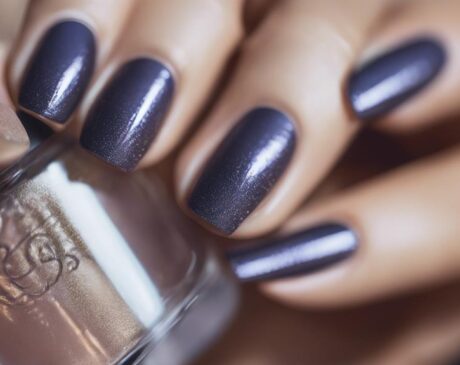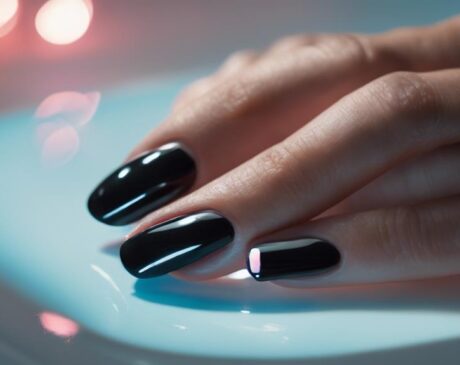What Happens if You Dont Cure Gel Nails?
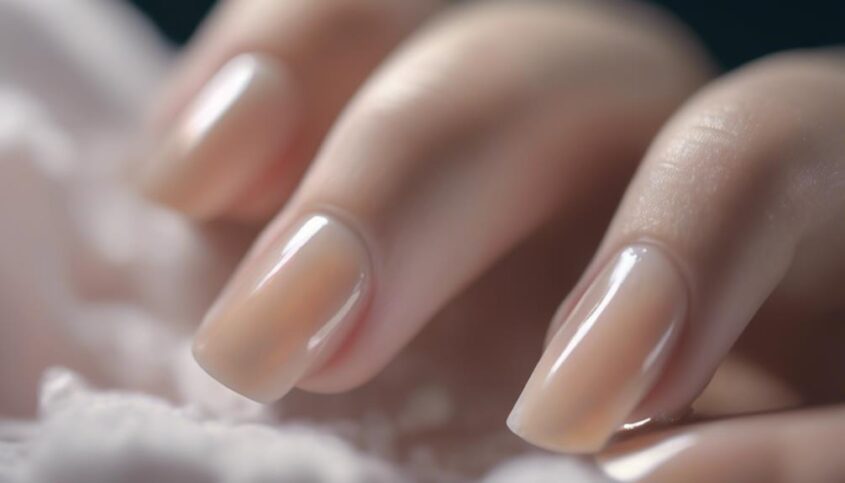
Improperly curing gel nails can lead to issues like chipping, peeling, and loss of shine. Inadequate curing affects the durability and longevity of the manicure. It can result in weakened nails, brittleness, and even fungal infections. Paying attention to proper curing techniques is crucial to prevent these problems. Prioritizing correct curing helps maintain the integrity and health of your natural nails. Knowing the impact of improper curing on your nails is essential for long-term nail health. Learn more about the effects of not curing gel nails fully to preserve the appearance and health of your nails.
Key Takeaways
- Chips, cracks, and premature dullness can occur.
- Gel polish may peel, change color, or become uneven.
- Weak, brittle nails and fungal infections are risks.
- Proper curing maintains nail health and appearance.
- Inadequate curing reduces manicure longevity and shine.
Gel Nails Wont Harden Properly
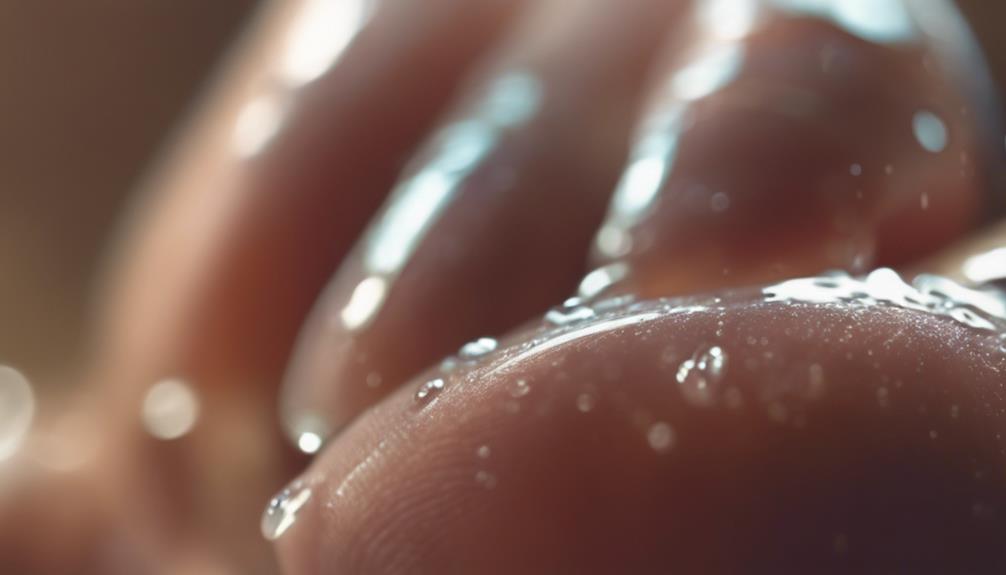
Gel nails may fail to harden properly if the curing process is not completed correctly, leading to a lack of durability and potential for premature chipping. Proper curing is essential as it activates the gel to harden and adhere to the nail surface, ensuring a long-lasting finish. Incomplete curing can result in the gel remaining soft, making it prone to denting, smudging, or lifting.
To ensure optimal hardening, it is crucial to follow the manufacturer's guidelines regarding curing times and techniques. Using the correct UV or LED lamp, with the appropriate wattage and settings, is vital for achieving the desired results. Additionally, applying thin layers of gel polish and avoiding overloading the nail can help promote even curing and enhance the durability of the manicure.
Increased Risk of Chipping
A common consequence of inadequate gel nail curing is an elevated susceptibility to chipping, compromising the longevity of the manicure. When gel nails are not properly cured, the layers remain soft and prone to damage, leading to an increased risk of chipping. This not only affects the aesthetic appeal of the manicure but also diminishes its durability. As individuals engage in daily activities, such as typing on keyboards, washing dishes, or simply going about their routines, the nails are subjected to various pressures that can cause chipping.
Moreover, chipped gel nails are not only unsightly but can also be inconvenient, requiring frequent touch-ups or complete removal and reapplication. This not only consumes time but also adds to the overall cost and maintenance of the manicure. To prevent such issues, ensuring the proper curing of gel nails is essential. By investing in quality products and following the recommended curing procedures, individuals can enjoy long-lasting, chip-free gel nails that withstand daily wear and tear with ease.
Potential for Peeling
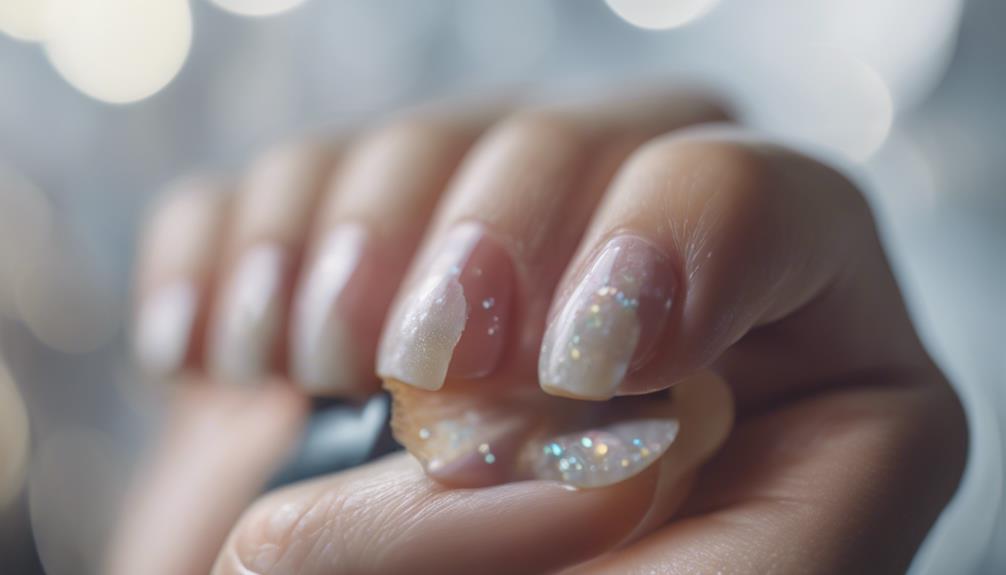
Improper curing of gel nails not only leads to an increased risk of chipping but also introduces the potential for peeling, further compromising the durability and appearance of the manicure. When gel nails are not properly cured, the following issues related to peeling may arise:
- Loss of Adhesion: Inadequate curing can lead to poor adhesion between the gel polish and the natural nail, causing the gel to lift and peel off prematurely.
- Moisture Seepage: Improper curing can create tiny gaps between the gel and nail, allowing moisture to seep in. This moisture can cause the gel to lift and peel.
- Weak Structure: Insufficient curing weakens the gel structure, making it more prone to peeling and breaking.
- Surface Irregularities: Improperly cured gel may develop uneven surfaces or wrinkles, increasing the likelihood of peeling.
- Shortened Lifespan: Peeling due to improper curing shortens the lifespan of the gel manicure, leading to premature removal and the need for a new application sooner than expected.
Lifting and Detachment Issues
When curing gel nails incorrectly, one common issue that arises is the occurrence of lifting and detachment problems. Lifting happens when the gel polish doesn't adhere properly to the nail, resulting in air pockets forming underneath. This can lead to the gel separating from the nail bed, causing the manicure to lift and possibly detach. Detachment occurs when the gel polish completely comes off the nail, ruining the manicure and requiring a complete redo.
To prevent lifting and detachment, it is crucial to follow proper nail preparation techniques, ensuring the nail surface is clean, dry, and free of oils. Additionally, correctly applying each layer of gel polish and properly curing it under a UV or LED lamp is essential. Over-curing or under-curing can both contribute to these issues. If lifting or detachment occurs, it is best to remove the gel polish entirely and start fresh to maintain the health and appearance of your nails.
Loss of Gloss and Shine
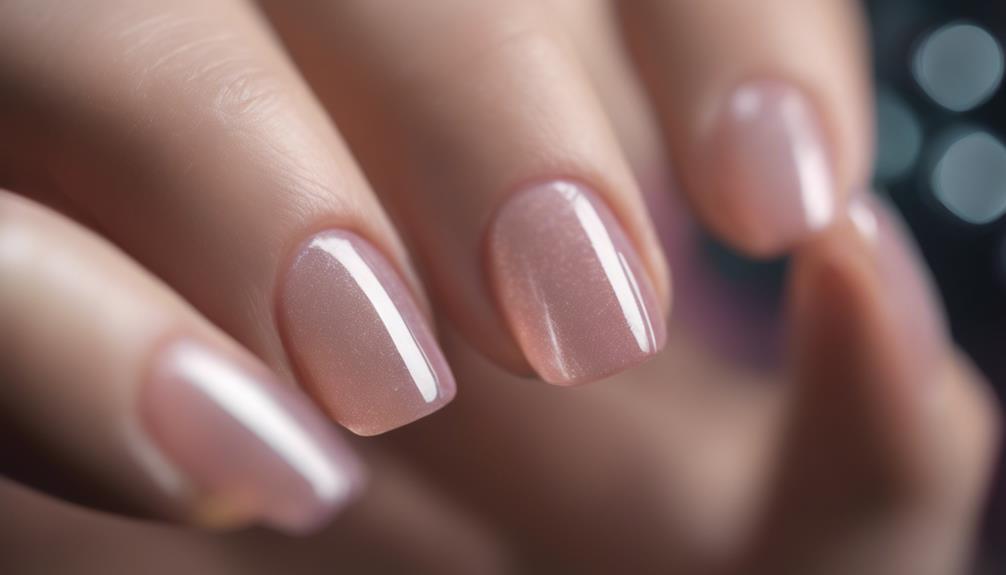
Loss of gloss and shine in gel nails can be a result of inadequate curing methods or improper application techniques. When gel nails lose their luster, it can diminish the overall aesthetic appeal of the manicure. To prevent this issue, it is essential to ensure proper curing and application procedures are followed meticulously. Here are some factors that can contribute to the loss of gloss and shine in gel nails:
- Inadequate curing time: Not curing the gel nails for the recommended duration can lead to a lackluster finish.
- Insufficient curing light: Using a low-quality or weak curing light may result in incomplete curing, affecting the shine.
- Improper application: Applying gel polish unevenly or too thickly can affect the final gloss and shine of the nails.
- Old or expired products: Using outdated gel products can impact the curing process and diminish shine over time.
- Skipping top coat: Neglecting to apply a top coat can leave the nails vulnerable to dullness and reduce longevity of the shine.
Gel Nail Discoloration
To maintain the quality and appearance of gel nails, it is important to address the issue of gel nail discoloration, which can detract from the overall aesthetic of the manicure. Gel nail discoloration may occur due to various factors such as exposure to sunlight, certain chemicals, or even the natural aging of the gel polish. This discoloration can manifest as yellowing, fading, or darkening of the nail color, leading to a less vibrant and fresh look.
Innovations in gel nail technology have introduced UV-stable formulas and enhanced pigments to combat discoloration and maintain the nail's original hue for a longer period. Additionally, using a quality top coat with UV protection can help prevent discoloration and extend the lifespan of the gel manicure. It is essential for nail technicians and individuals alike to be aware of these advancements to ensure that gel nails remain visually appealing and free from discoloration, enhancing the overall longevity and beauty of the manicure.
Reduced Longevity of the Manicure
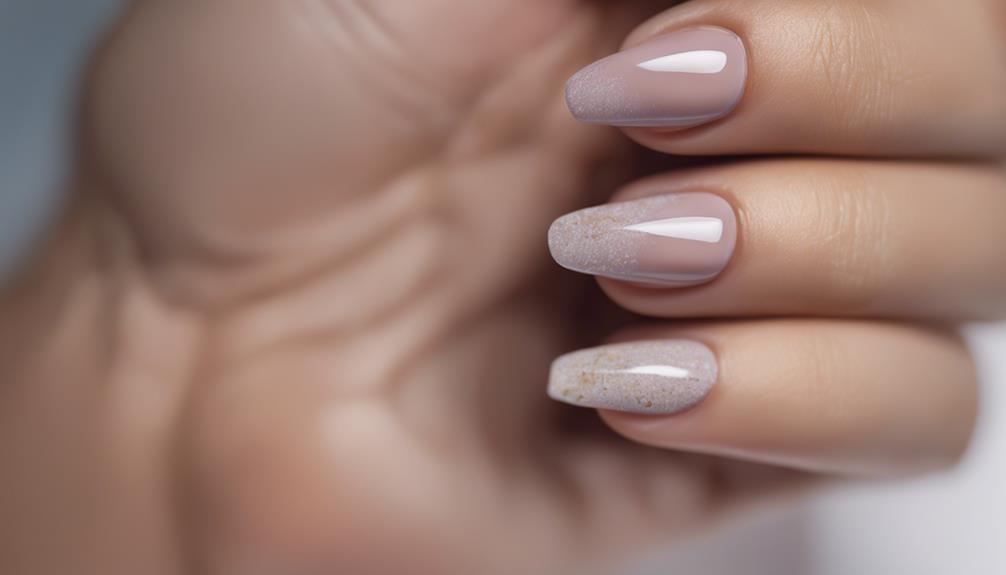
When gel nails are not properly cured, the manicure's lifespan is significantly reduced. This can lead to an increased likelihood of chipping, causing the nails to lose their flawless appearance. A crucial aspect of maintaining a gel manicure is ensuring that each layer is adequately cured to achieve the desired longevity and aesthetic appeal.
Shorter Manicure Lifespan
A shorter lifespan of a gel manicure may result from inadequate curing techniques, leading to premature chipping and peeling. Proper curing is essential for the longevity of gel nails. Factors contributing to a shorter manicure lifespan include:
- Incomplete curing of each layer
- Incorrect curing time or temperature
- Use of expired or low-quality gel products
- Applying thick layers of gel polish
- Excessive exposure to water or harsh chemicals
To ensure a longer-lasting gel manicure, it is crucial to follow proper curing procedures, use high-quality products, and take necessary precautions to protect the nails from damage.
Increased Chipping Likelihood
Improper curing techniques can significantly increase the likelihood of chipping in gel manicures, ultimately reducing the longevity of the manicure. When gel nails are not correctly cured, the layers may not bond properly, leading to a weaker and less durable manicure. This can result in chips appearing sooner than expected, causing frustration for individuals seeking long-lasting nail enhancements. Proper curing is essential to ensure that the gel polish hardens fully, providing a strong and resilient finish that resists everyday wear and tear. By following correct curing procedures and using high-quality products, the chipping likelihood can be minimized, extending the lifespan of the gel manicure and maintaining a flawless appearance for an extended period.
Diminished Nail Appearance
Diminished Nail appearance can be a consequence of improperly cured gel nails, resulting in a reduced longevity of the manicure. When gel nails are not properly cured, several issues may arise, affecting the overall appearance of the nails:
- Chips and Cracks: Improperly cured gel nails are more prone to chipping and cracking.
- Dullness: The shine and luster of the gel polish may diminish prematurely.
- Color Changes: The color of the gel polish may fade or change over time.
- Peeling: The gel nails may start to peel off sooner than expected.
- Uneven Texture: Improper curing can lead to an uneven or bumpy texture on the nails.
Impact on Overall Nail Health
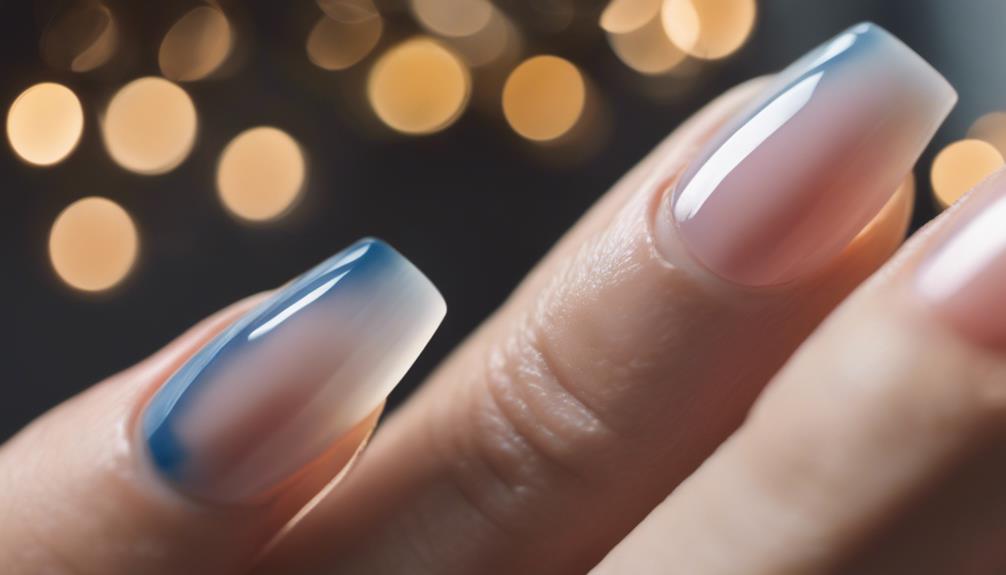
Neglecting to properly cure gel nails can lead to long-term damage to the overall health of your nails. When gel nails are not correctly cured, it can result in a range of issues that extend beyond just the appearance of the nails. The health of your natural nails can be significantly impacted, potentially leading to weakness, brittleness, and even the development of fungal infections. It is crucial to prioritize the proper curing of gel nails to maintain the overall health and integrity of your nails.
| Impact on Overall Nail Health | Description | Prevention |
|---|---|---|
| Weakened Nails | Gel residue left on nails can weaken the natural nail plate. | Ensure proper curing time and technique. |
| Brittleness | Insufficient curing can make nails brittle and prone to breakage. | Use high-quality gel products and follow curing guidelines. |
| Fungal Infections | Moisture trapped under uncured gel can create an environment for fungal growth. | Keep nails dry and clean; seek professional help if signs of infection appear. |
Frequently Asked Questions
Can Not Curing Gel Nails Properly Lead to Any Health Issues?
Improperly curing gel nails can result in potential health risks due to uncured chemicals causing skin irritation or allergic reactions. It is essential to ensure proper curing to maintain nail integrity and avoid any adverse effects.
How Long Does It Take for Gel Nails to Start Chipping if Not Cured Properly?
When gel nails are not properly cured, chipping can begin within days. Incomplete curing compromises the durability of the manicure. Utilizing cutting-edge curing techniques like LED or UV lamps ensures a longer-lasting, flawless gel nail finish.
What Are Some Common Reasons for Gel Nails to Peel if Not Cured Correctly?
Inadequate curing of gel nails can lead to peeling due to insufficient bonding with the natural nail plate. Common reasons include improper application technique, uneven curing, using expired products, or not following manufacturer guidelines.
Is There a Way to Fix Lifting and Detachment Issues Without Curing Gel Nails Again?
To address lifting and detachment issues in gel nails without recuring, innovative techniques like gentle buffing, primer reapplication, and precise application of additional gel can offer effective solutions. These methods can restore adhesion and longevity.
Can Not Curing Gel Nails Affect the Effectiveness of Nail Polish or Top Coat?
Not curing gel nails can compromise the effectiveness of nail polish or top coat, as they rely on the fully cured gel base for optimal adhesion and longevity. Proper curing ensures a strong foundation for subsequent layers.

